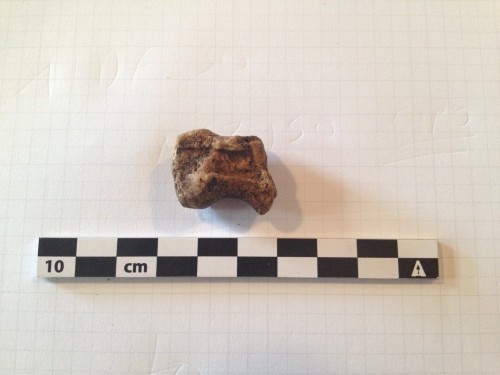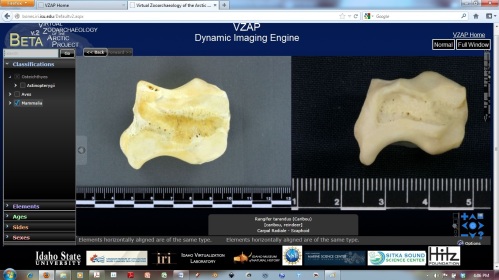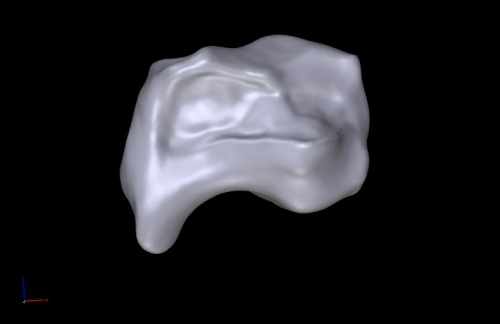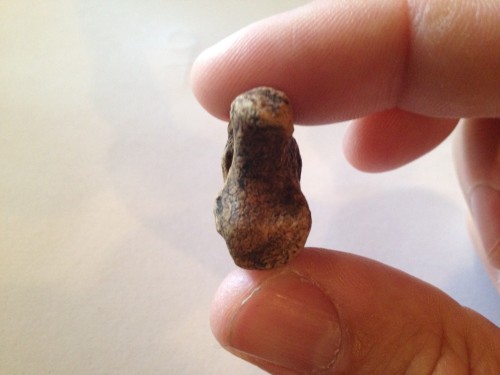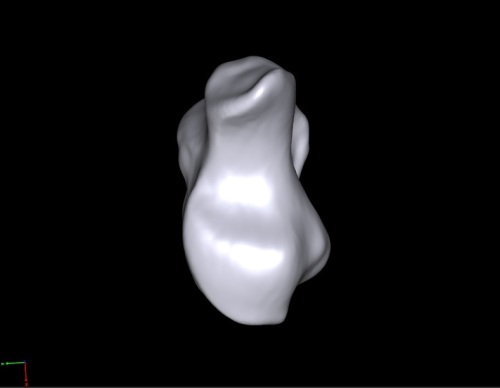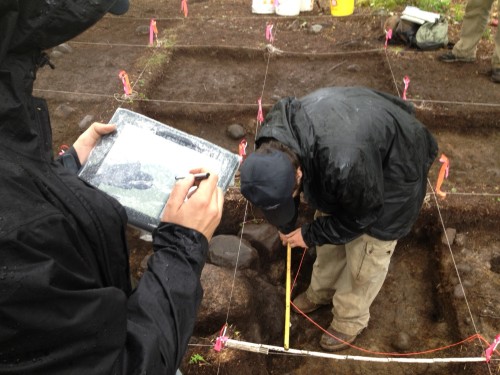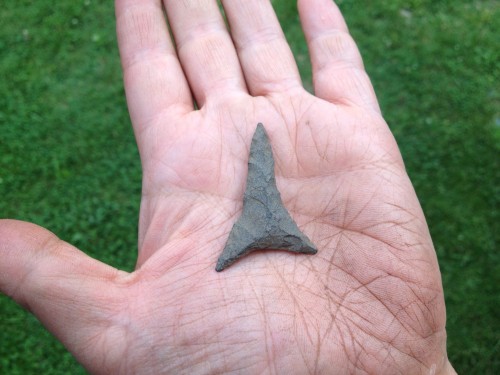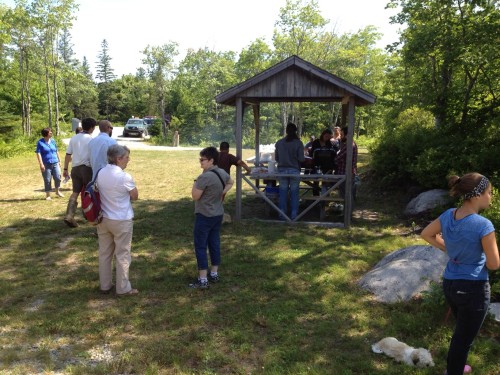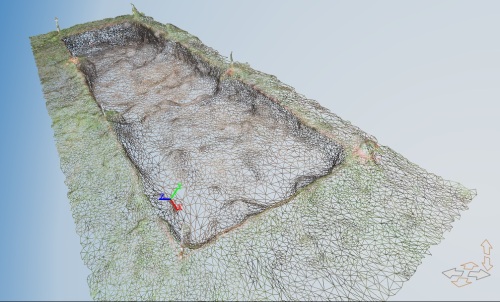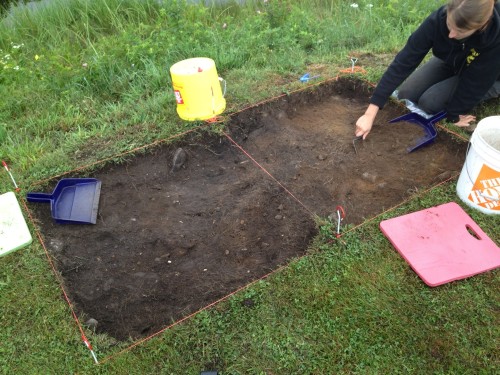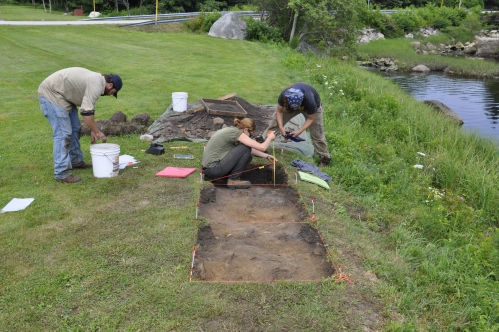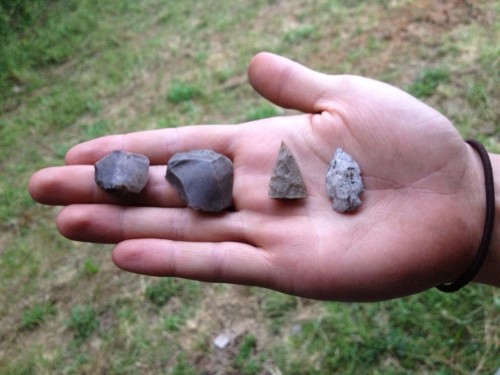Over the past two days we’ve exposed the top surface of the house at the site in the cranberry bog. Roughly oval in shape, it manifested as a dark soil surface ringed by lighter subsoil deposits. It also had several post moulds (dark soil stains left from upright tent poles) around its circumference as well as internal rock arrangements.
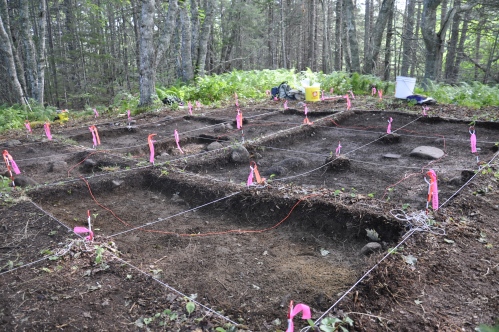
Image of the oval dwelling surface (the floor of a wigwam-like structure), outlined with string. This floor was very difficult to discern and involved careful scrutiny of changes in soil colour inside and outside of the structure (these don’t replicate well in photographs, hence the string). The raised baulks will provide a record of soil layers as they transition through the house floor. Note the dark colour of the interior of the structure. For a better picture you will have to read Gabe’s upcoming doctoral dissertation!
Mapping these features is difficult and time consuming; every aspect of the feature must be drawn accurately. Archaeologists typically do this with pencil and graph paper (each sheet usually depicts two side-by-side grid units). When we get back from the field, each of these sheets must be scanned and loaded into illustration software to be traced by hand. The traces must then be digitally concatenated and formatted to produce a publication quality map. This process can take days, and it is a source of many transcription errors introduced as hand drawn images are converted to digital format. This year, however, we are using iDraw on our iPads to map features and draw soil profiles.
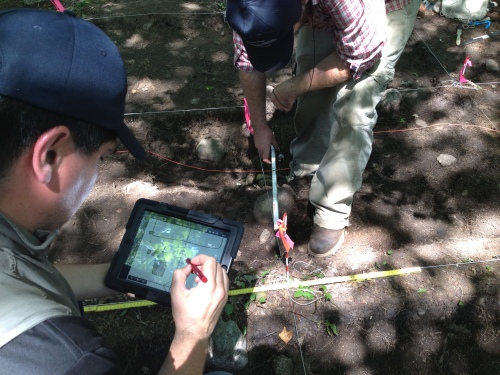
Here I plot features on the iPad as Gabe measures them in relation to the grid system. In my experience, using the iDraw app is as fast as using traditional pencil and paper.
The iDraw app is ideal for archaeological mapping because the canvas (background) can be set to a millimeter grid that perfectly mimics real graph paper. From there producing a map is as simple as drawing on regular graph paper (we use a stylus to draw on the iPad). However, iDraw is also a fully featured vector-based illustration app, meaning that it has the ability to produce a completely formatted and polished image (which is near-publication quality) as you are drawing it. We use the iDraw pen tool to do most of our mapping; by holding and dragging each plotted point you can produce curves and other complex outlines. When the “polygon” is closed it automatically fills with the colour of your choice, leading to instant colour coding of rocks, hearth features, etc. Because much of the formatting required for publication can be done while you are mapping, such software will save many days of scanning, tracing, and formatting time in the office.

A screen capture of part of the finished map on iDraw. All of the formatting was done in the field during the mapping process. You’ll have to see Gabe’s doctoral dissertation for the complete map!
We found the layering function of the software particularly helpful; it can be used to set background layers (such as our grid unit system) that can’t be modified while drawing other features on a different layer. In our setup the grid units are reproduced on Layer 1, the house outline and other soil features on Layer 2, the rock features on Layer 3, the baulk system on Layer 4, and elevations on Layer 5. This way there is no danger of modifying the data in previous layers by accident as you draw.
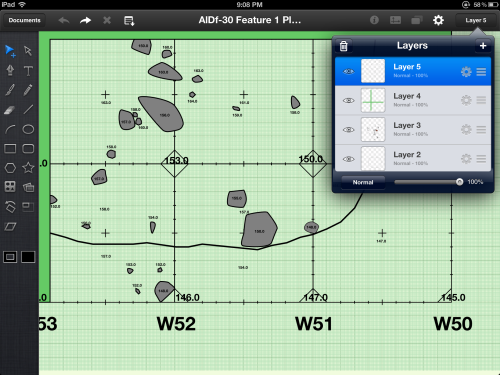
Layers in the final map. Note the elevations plotted for each feature and grid pin.
When I originally began thinking about digital data collection in the field, mapping was the issue that always seemed to be the most daunting and problematic. Existing handheld devices were too small and inaccurate and the available drawing software was rudimentary. With new tablet computers and apps such as iDraw, there is little reason to continue using pencil and graph paper in any archaeological field project where efficiency, accuracy, and cost effectiveness are goals.

